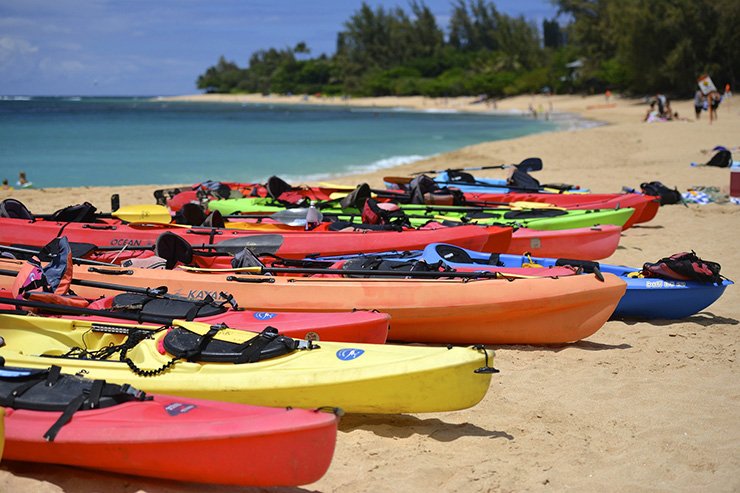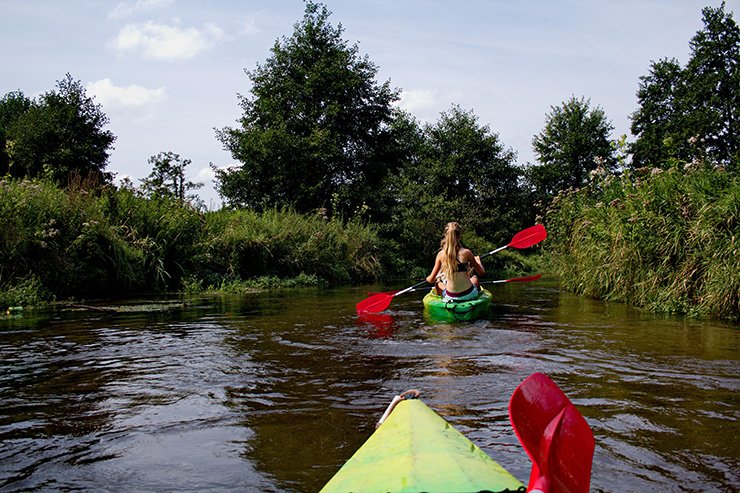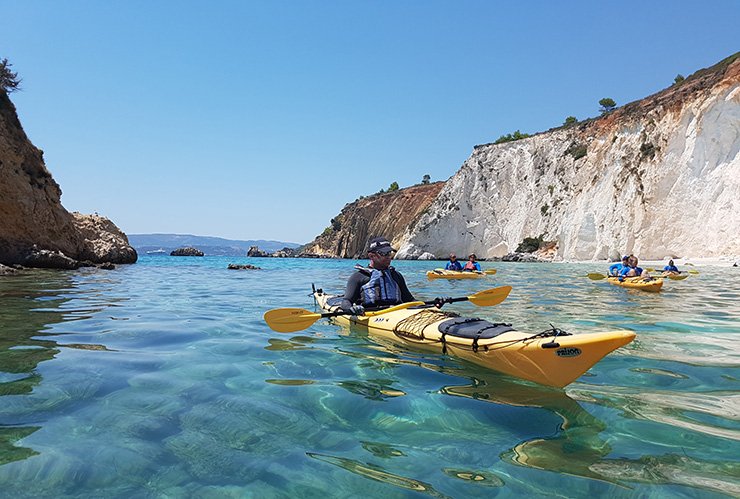Kayaks, on the surface, may seem like simple pieces of equipment. Still, the variation in materials, manufacturing, and the economics surrounding them is complex and requires a lot of exploration to understand.
While it can be confusing why one kayak costs a few hundred dollars, and another one has a price tag of a few thousand, once you understand the factors below you’ll be able to understand why kayaks are so expensive.
Key Takeaways
- Kayaks have huge price ranges, ranging from a few hundred dollars to multiple thousands. They require rigorous testing and quality control and must be made to specific standards, necessitating materials that bump up the price.
- The market surrounding kayaks follows certain rules, which have a tremendous influence on price and how brands approach pricing.
- Kayak manufacturing can be quite complex, with lots of different factors involved, which increases production costs.
- Kayaking as a sport can be expensive; high-tier gear is in demand, and people are willing to pay a premium.
What Makes Kayaks So Expensive to Buy?
A kayak’s expense comes from two sides, the manufacturing that goes into it and the demands and behavior of the customers that it serves. Both are very important and are two sides of the same coin.
If there were no demand for high-quality kayaks, there’d be no profit in it. You’d see tons of cheap and flimsy kayaks flooding the market instead. However, this is not the case, there’s a huge variety available on the market.
Cheaper kayaks can go in the range of a hundred plus dollars, but sometimes the sky is the limit for expensive kayaks (you can be looking into ten thousand plus dollars for really high-end kayaks).
Starting with manufacturing and ending with the market factors, the headings below will tell you everything you need to know.
Kayaks are Expensive to Manufacture
Like anything, designing, sourcing materials, and manufacturing a kayak takes money. It can cost around $10,000 for a mold that makes basic plastic kayaks. Distributing kayaks to retailers is also another issue manufacturers face.
The first point to remember is that outside of whatever extra features or designs a kayak has, its primary job is to keep you safe in sometimes challenging environments. Even the cheapest recreational kayaks take expertise and skill to design, and every hull has to withstand wear and tear.
Due to this, there are only so many areas that manufacturers can cut costs on. Many manufacturers specialize in one specific area – for example, Pelican makes cheaper and more beginner-friendly kayaks.

Kayaks Are Made From Durable Materials
No matter if you have a really good fiberglass sea kayak or opt for one of many of the cheaper inflatable kayaks, every single hull is made from durable materials. It does not matter how well something is designed, if the materials do not meet the conditions the vessel is designed for, it will fail.
As a kayak manufacturer, the fastest way to go out of business is to construct kayaks with a reputation for breaking easily. This is why beginners are usually surprised about how durable a basic kayak is. This is also why even a cheaper new kayak might cost you hundreds of dollars.
Kayaks can be made from polyethylene plastic, but more specialized hulls (like sea kayaks or whitewater kayaks) can be made from fiberglass, kevlar, and other materials added to the rigging and structure.
Inflatable kayaks are commonly made from PVC, but might also be wrapped in fabric or poly-based materials (these are synthetic materials created for extra durability).
You Need Skilled Labour To Make a Kayak
A kayak product design lead and their team are not cheap. This is a specialized skill set, and there is not a huge dearth of people in the talent pool equipped to do this job. Due to this, most manufacturers pay their employees good salaries for their expertise.
Kayak manufacturing goes through many steps, R&D (research and development), molding, construction, testing, packaging, and shipping.
Kayak molds have to be extremely precise. While some manufacturers can churn out the same basic models fairly quickly, a more expensive kayak needs a mold designed and calibrated toward its hull. This mold has to be checked and rechecked very frequently because if the mold fails, the entire kayak will have to be thrown away.
The equipment to make a kayak is also ginormous and expensive – usually entailing large “ovens” that rotate the kayak and ensure the plastic or other material base sets properly. The more expensive the materials used in construction, the more advanced equipment is needed.
Kayaks are not usually fit together with purely automated manufacturing. A worker usually has to apply the finishing touches, either by scraping off excess plastic from the set kayak or by then adding attachments. This has to be done at the right time, and there is barely any wiggle room for mistakes.
Storing and packaging kayaks takes a lot of room, equating to more space needed and bigger factories.
The Manufacturing Location Can Have an Impact on a Kayak’s Price

Regarding location, you might find that some countries have cheaper kayaks when compared to the USA. This can be due to lower safety standards, access to materials, and local demand.
Across the US, you might find many more options in coastal areas. This is where you’ll find the Kevlar kayaks costing thousands, but they’ll be more options and potentially cheaper options for specialized kayaks.
In the interior of the US, you’re just not going to find as many options. Retailers aren’t going to take chances on a kayak that won’t sell or might take too long to sell.
Most large general stores will stock lower-priced kayaks. They have the most mass market appeal, can be bought in greater quantities, and are easier to transport over longer distances.
Another advantage of coastal locations is that you’re more likely to find a good used kayak. Even if you’re in the market for more expensive kayaks, you might knock a few hundred to a few thousand off the price tag.
Stores will want to shift older models to stock newer, more profitable models, and kayakers regularly switch out their kayak as their needs change.
Kayaks are Large, and More Expensive to Store and Transport
Another consideration is distributing to stores. Kayaks aren’t as easy to ship in huge numbers compared to other pieces of equipment. The market is large but not large enough for retailers to go out of their way to develop large supply chains (more on this later).
While kayaks can be boxed up, there has to be some caution while shipping them. Handling new kayaks poorly or exposing them to too much impact damage can potentially degrade the hull’s integrity. A seasoned kayaker can spot this kind of damage reasonably easily.
This is especially true for a fiberglass kayak or a kayak made from other more advanced materials. The more it costs a manufacturer to produce, the more care they have to take in shipping and handling. Which means many manufacturers are not as keen to ship statewide.
Kayaks Are Not as Widely Available as Other Sports Equipment
You can walk into any outdoor store or sporting store and find selections of potentially hundreds of baseball bats. More and more stores are even fronting things like figure skating boots for ice skaters, which would have been a rarer site in the past.
Most stores have a limited selection, but most of these will be a basic plastic kayak that works great for beginners but wouldn’t take you far if you wanted to go deep-sea kayaking.
The reasons mentioned above (distribution difficulties and cost) tend to lead to fewer kayak choices across the board. However, this depends entirely on your location. Kayak manufacturers put a lot of thought into who their target audience is, and they devote all their effort to satisfying this consumer base.

The Kayak Market Dictates The Price
The factors above deal primarily with manufacturing, but the other side of the story is the market itself. After all, if nobody were paying thousands of dollars for top-tier fishing kayaks, manufacturers simply wouldn’t be able to make and sell them.
When you understand the whims and wants of the market, you begin to realize why price ranges vary so much, and a lot of it is because that’s what most kayakers want.
Kayaks Have a Limited Market, and Brands Know This
Kayaking doesn’t have the mass appeal and monetization potential of something like the NBA or NFL. There is high-level competition, but the core market tends to be very enthusiastic hobbyists.
This market of engaged hobbyists is expanding, for example, between 2010 and 2021, the number of kayakers grew by a whopping 87.3 percent. In 2021 nearly 19 million people went kayaking for the first time – this is absolutely huge and unprecedented growth.
This growth explains why there are so many kinds of kayaks and many different brands to satisfy different kayaks. However, of those 19 million people, how many are dedicated kayakers? Nobody really knows.
Of this core of dedicated kayakers, how many are obsessed with fishing and kayaking to fork out thousands for a top-tier fishing rig? Most manufacturers have a good idea that informs their price tags.
Most manufacturers survive and prosper by occupying a niche in the market and developing a reputation for making good kayaks for that audience. While there are high profit margins in some kayaks, in order to keep making money a manufacturer has to reinvest a lot of this money into R&D and keep innovating, or they’ll lose their target audience to a competitor.
For anyone curious about the numbers, check out this article on kayak statistics to get an overview.
Hardcore Kayakers Don’t Care as Much About Cost
One of the main benefits of the kayaker market is that of the limited hardcore, many are willing to pay top dollar for the latest models. This is especially true for anyone involved in kayaking in any competitive capacity.
This is why year in and year out, many manufacturers are willing to prototype and R&D new kayak designs, as they can charge a lot of money to this slice of the market, and they’re eager to pay for it.
This drives up the price of more specialized kayaks but doesn’t really affect the price of beginner kayaks.
Kayaks Are Customizable (And You Can Spend a Lot of Money Tuning Them Up)
In some ways kayaks are like cars, you can add accessories to them and customize them to suit your needs.
Many people buy inflatable kayaks and add motors and other accessories. Some people add extras that improve stability. Some opt for extra storage space.
You can do a whole host of things to enhance your kayak, depending on what you’re doing with it. This is almost a separate market by itself, but you can certainly spend a good chunk of money tuning up a kayak if you want to.

Have an Idea About What You Want: Don’t Overpay
Now, all this talk about expensive price tags might have you thinking that getting a semi-decent kayak will leave you bankrupt. However, this just isn’t the case at all as long as you keep a few things in mind:
- Most kayakers regularly change kayaks throughout their lifespan, don’t try to buy that one perfect kayak that will forever suit your needs; it doesn’t exist.
- The more you research and understand about kayaks, looking at the different types and what they’re made out of the more you’ll understand what a reasonable price is and what isn’t.
- There are so many new models of kayaks coming out that going for older kayaks is a perfectly good way of saving money – you’ll still get tons of modern features, but it just won’t be cutting edge.
Should You Invest in a Kayak?
Maybe the most pressing question here is; is it even worth it to invest in a good kayak? The answer is that kayaks can potentially be great value for money.
- The manufacturing and materials in nearly every kayak but the absolute cheapest means that they will last a long time (decades).
- Kayaks are scalable to your needs, you do not need to pay for advanced and specialized hulls – it is not necessary at all (unless you plan on taking up extreme forms of kayaking).
- Kayaking as a hobby is scalable to nearly every individual. It offers therapeutic benefits, can keep you fit, and is enormous fun with friends, family, or even on your own.
The most expensive kayaks are definitely worth it, but only for the right kayaker. There is a night and day difference between performances. However, the average person can find quality kayaks for reasonable prices.
What About Buying Kayaks Second Hand?
Buying used kayaks is always an option, and sometimes it’s a fantastic option. The issue with buying second-hand is that you don’t always know what you’re paying for.
If you’re a veteran and know who’s selling to you or you can trust them, buying used kayaks can save you a fortune.
If you’re a beginner, it’s nearly always a better idea to splurge out for a new recreational kayak. You do not want your initial experience to be tainted by a faulty kayak.
Conclusion
It’s very common (especially for beginners) to wonder why kayaks are so expensive. However, once you understand the factors that go into manufacturing a kayak and the market that dictates demand, you’ll realize why kayaks can sometimes come with eye-watering price tags.
Thank you for reading. Please like, comment, and share if you found the information here useful.

